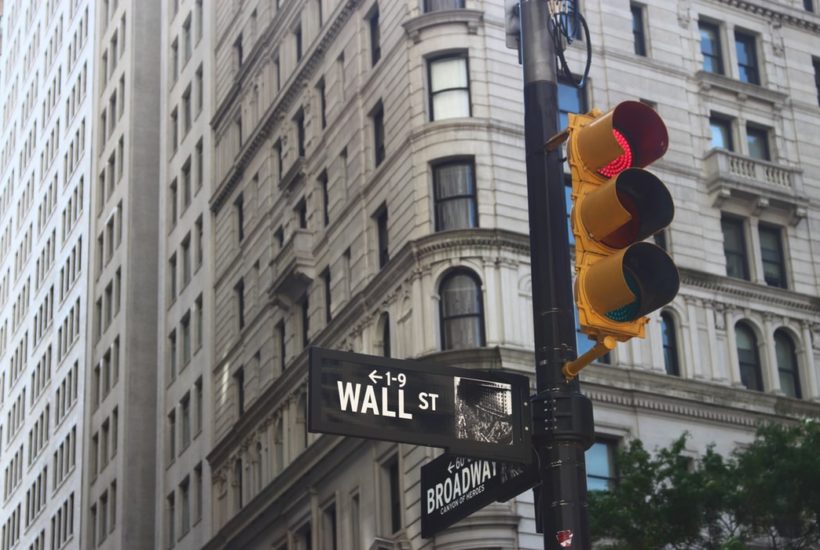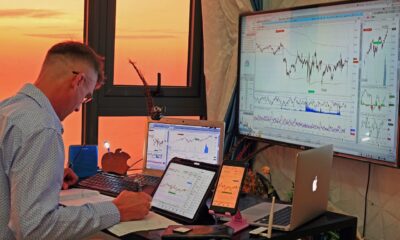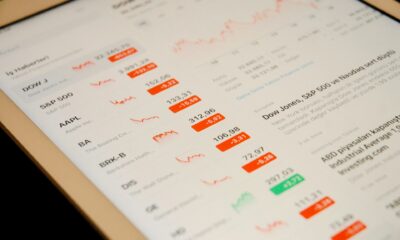Featured
How Wall Street dismissed recessionary signals
One of the best examples of Wall Street’s propaganda machine at work is its willingness to dismiss recessionary signals. The inverted yield curve is a perfect example, which they claim is not a harbinger of recession. However, an inverted yield curve is always a sign of a slowing global economy and the imminent collapse of unstable asset bubbles that were built on cheap credit.

One of the best examples of Wall Street’s propaganda machine at work is its willingness to dismiss recessionary signals. The inverted yield curve is a perfect example. Case in point, look at the story that was put out on Market Watch dated Nov. 27, 2006. Exactly one year before the Great Recession officially began, the stock market started its decline of more than half. The global economy started to collapse.
Here’s how some on Wall Street and the Fed described what was happening on the precipice of the global financial crisis regarding the inversion of the yield curve at that time: “Bernanke, and his predecessor Alan Greenspan, have attributed the inverted yield curve to a ‘global savings glut’ that has sparked fervid demand for Treasuries and U.S. corporate bonds.”
“Economists have noted that this buying spree is inconsistent with the possibility of a looming recession. In the past, inverted yield curves have been harbingers of recession. But a number of economists, including Federal Reserve Chairman Ben Bernanke, do not think this is the case in the present instance.”
Alan Greenspan
A few years earlier, Alan Greenspan told Congress during his annual testimony on November 2005 that he “would hesitate to read into the actual downward tilt of the yield curve as meaning necessarily as it invariably meant 30 or 40 years ago. This used to be one of the most accurate measures we used to have to indicate when a recession was about to occur. It has lost its capability of doing so in recent years.”
Ben Bernanke
In 2006, his successor Ben Bernanke appeared to be even more confident that the flat yield curve was caused by the “significant increase in the global supply of savings.” He had nothing to say about the faltering economy. In his March 2006 speech to the Economic Club of NY, Bernanke stated he “would not interpret the currently very flat yield curve as indicating a significant economic slowdown.” Instead, he bloviated on about four other anomalies adding to the demand for US long term debt that was putting downward pressure on the long end of the curve.
First and foremost, among his excuses was strong international demand for US debt. Perhaps, it was his indifference to the curve inversion that caused him to assure investors in May 2007. In a speech given at the Federal Reserve Bank of Chicago, he said, “Given the fundamental factors in place that should support the demand for housing, we believe the effect of the troubles in the subprime sector on the broader housing market will likely be limited.”
In other words, he wanted investors to ignore the yield curve inversion because in the Fed’s infinite wisdom everything was just fine.
Janet Yellen
The first lady Chair of the Federal Reserve, Janet Yellen, is now taking her turn assuring investors of the yield curve’s irrelevance; explaining very recently on a Fox Business Network interview dated August 14th, 2019:
“Historically, [the yield curve inversion] has been a pretty good signal of recession and I think that’s when markets pay attention to it, but I would really urge that on this occasion it may be a less good signal.”
Jerome Powell
And, turning to the current dictator of monetary policy, Jerome Powell, he said in his March of 2018 news conference that while the inverted yield curve has had its prescience in the past, “but a lot of that was just situations in which inflation was allowed to get out of control. The Fed had to tighten, and that put the economy into a recession. That’s really not the situation we’re in now.”
Inverted yield curve
The Fed and Wall Street are great at concocting stories to claim that it is different this time. One of their favorite and reliable false narratives is that an inverted yield curve is not a harbinger of recession. Well, this time is most likely not at all different. That’s despite a never-ending parade of gurus that come on financial news networks and explain why this time the yield curve inversion is irrelevant.

What is the major point here? Yes, central bankers and Wall Street Shills never learn their lessons. But also that an inverted yield curve is not some exogenous event that is coincidently linked to recessions. It is always a sign of a slowing global economy. It signals the imminent collapse of unstable asset bubbles that were built on cheap credit.
This is because an inverted yield curve causes credit to shut down. When the difference between where banks can borrow funds (short end of the curve) and what income their assets can generate (long end of the curve) shrinks towards zero, the incentive to lend money erodes.
Loan defaults
The slowing economy dramatically increases the risk of loan defaults. Lending institutions then become much more reticent to extend new credit at low margins to those that have a higher potential to default. The result is a significant reduction in the amount of money created; the same money that fuels these asset bubbles and the overleveraged economy.
Therefore, the inverted yield curve isn’t different this time, and the countdown to recession and equity market collapse has begun. An official recession has always occurred in less than two years after the initial inversion. In 60% of those inversions since 1955, the stock market topped out just three months after the date of that first inversion, according to BOAML. It should be noted that the spread between the Fed Funds Rate and the 10-year Note has already been negative for the past four months. Indeed, the August report from the ISM proved that the manufacturing recession in the US has officially arrived.
Debt in the global bubble
There’s a record amount of debt extant in the world that sits on top of a massive global bond bubble. Central banks have a love affair with ZIRP and even NIRP. Thanks to that, they have almost no room left to remediate a recession and market collapse. That is, other than the full deployment of massive helicopter money. Meaning, new money is created by governments and central banks and then handed out directly to the private sector. What could possibly go wrong with that?
This is why a static buy and hold, or dollar-cost averaging investment strategy isn’t working any longer. You have to know what sector of stocks to own and when it is time to short stocks or bonds; or both. Such are the consequences of having both fixed income and equities in a record-breaking bubble together for the first time in history.
—
DISCLAIMER: This article expresses my own ideas and opinions. Any information I have shared are from sources that I believe to be reliable and accurate. I did not receive any financial compensation for writing this post, nor do I own any shares in any company I’ve mentioned. I encourage any reader to do their own diligent research first before making any investment decisions.

-

 Biotech2 weeks ago
Biotech2 weeks agoEcnoglutide Shows Promise as Next-Generation Obesity Treatment
-

 Business4 days ago
Business4 days agoThe TopRanked.io Weekly Digest: What’s Hot in Affiliate Marketing [uMobix Affiliate Program Review]
-

 Business2 weeks ago
Business2 weeks agoThe TopRanked.io Weekly Digest: What’s Hot in Affiliate Marketing [PureVPN Affiliates Review]
-

 Crowdfunding6 days ago
Crowdfunding6 days agoPMG Empowers Italian SMEs with Performance Marketing and Investor-Friendly Crowdfunding

























